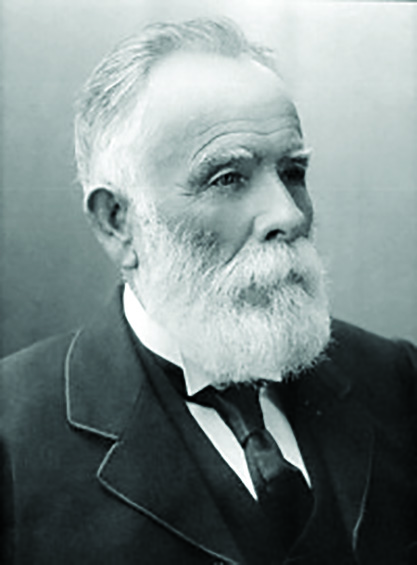History: George Talbot – Richmond’s first mayor

George Talbot became a prominent man in public affairs, both in Richmond and the wider district. Photo: Supplied.
George Talbot with his new wife Frances, nee Cox, came to Nelson from Dorset, England, arriving in February 1858 in the ship ‘Cresswell’.
The couple had 10 children with their first born just three months after their arrival.
After settling in Richmond George entered into a business partnership with Thomas Hodder, running a large two-storied general store and drapery that sat on the southeast corner of Gladstone Road and Queen Street until 1872 when the partnership was dissolved.
In the same year George put out a tender for the construction of a house in Richmond.
Known as Dorset Place during the Talbots’ tenure, the two-storied, 16-room timber house was designed in the characteristic carpenter gothic style, with steep gables and decorative bargeboards.
The grounds were laid out with trees and flowering shrubs, with orchard, flower and vegetable gardens, along with a tennis court, stable, coach-house and workshop.
It was named after the English county of Dorset from which both George and Frances hailed.
George became a prominent man in public affairs, both in Richmond and the wider district.
So much so that it was only verbalised after his death just how much the community owed to him for his contribution to the district.
The list of his public service is impressive:
For some years he occupied a seat on the old Waimea Road Board, the Richmond Road Board and the Richmond Town Board, 35 years member of Richmond School Committee and more than 20 years as chairman, 10 years on the Hospital and Charitable Aid Board, member of the Nelson Education Board under the Provincial Government, 17 years member of the Nelson Education Board under the Colonial Government and 12 years as chairman, 7 years member of Victoria College Council, sat on the Rocks Road Committee and on the Nelson Harbour Board from its inception, 38 years as a superintendent of a Sunday School and a very active member of the Agricultural and Pastoral Association, being treasurer of that body also for a long period, attended monthly meetings of the magistrate’s in the Waimea for about 20 years, being chairman for several years, and was also for many years as a Justice of the Peace.
Such a record is truly worthy of the highest praise.
On Richmond being made a borough George was elected its first mayor, and was re-elected twelve times unopposed, holding the position for 13 years before retiring in 1907.
In his closing speech he spoke that the Council had always striven to do their best for the township and its people, and that there had never been any selfish interests involved.
Councillor Croucher responded on behalf of the Council concerning the measure of success that had been achieved, and of the careful and painstaking manner in which His Worship the Mayor had guided the affairs of the borough.
George’s public life was characterised by ability and broad mindedness, and kindly attitude towards those who may have disagreed with him that enabled him to discharge his duties without sacrificing either friendships or principles.
In his private life his virtues were those of a kindly Christian gentleman who was esteemed by all who came into contact with him.
In early August 1907 George and Frances celebrated their golden wedding anniversary and were presented with a silver tea and coffee service and a salver, but tragedy struck only 20 days later when Frances died from influenza.
George died four years later on the 3rd of February 1911 and was buried beside Frances in Richmond cemetery.
